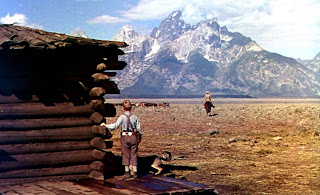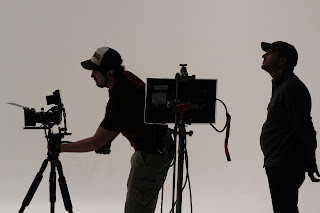The three years that saw much of the United States, and the world, under heavy restrictions due to Covid-19 fears prompted many people to examine ways of working remotely, including actors. The move to taping auditions opened up new opportunities for working actors, who figured that if U.S. studios can fly in British, Australian, and Canadian actors - and not just the big stars - they can certainly fly in American actors from Texas, Connecticut, Idaho, or any other state. At least that's the theory. Lots of talent out there.
I've been thinking about this and the many benefits of filming on location, because an article turned up today in Cowboy State Daily that discussed the many classic Western films with stories set in the beautiful mountains of Wyoming, - Butch Cassidy and the Sundance Kid (1969), Cat Ballou (1965), Unforgiven (1992) and Shane (1953) to name a few. Wyoming history is full of people and events with dramatic potential: the Johnson County War, the Wagon Box Fight, the building and impact of America's Transcontinental Railroad, the Hole-in-the-Wall Gang, and the more than 5,000 women ranchers at the time it was admitted to the Union in 1890. Still, only Shane was actually filmed in Wyoming. (See Andrew Rossi's full article at Cowboy State Daily)
Understandably, it can be costly to haul cast and crew to a remote location (although that hasn't been a problem for New Zealand.) Bollywood has found a way to significantly cut costs on Indian films by developing effective techniques for shooting in natural light, which can save a ton on set-up time and production. If you're a filmmaker that is worth studying, as it is being adopted by some directors. (The 2015 film The Revenant, with Leonardo DiCaprio, for example, was shot in natural light.)
Weather can be a problem too. Rocky Mountain living, for example, comes with cool and unpredictable weather spring and fall. Stories set in that location would logically show that, but weather can make for continuity issues if you're shooting over multiple days. Also, weather hasn't prevented John Linson and Taylor Sheridan's wonderful series Yellowstone from being filmed in Montana and Utah. Sheridan's terrific film Wind River does show a few clips of Lander, Wyoming, although principal photography was in Utah, a long way from the Wind River and Wind River Valley of Wyoming, an area that has a very distinctive topography. I suspect that the tax incentives offered by so many other states, like Georgia, are the primary consideration, and the Wyoming legislature is loathe to follow the herd on that one.
But I have to wonder what price filmmakers can put on authentic scenery, which can add so much to the look of the finished film? Director George Stevens was a stickler for authentic locations. Here's the trailer from Shane, which he shot near Jackson, Wyoming, at Grand Teton National Park. It would be hard to find this kind of grandeur anywhere else - clean haze-free air, dazzling sunlight, breathtaking mountains pushing up from a level plain. The film was nominated for six Academy Awards at the 1954 Oscars, including Best Picture, Director, and Screenplay. It won for Loyal Griggs' stunning cinematography.
And yes, I wish they still made trailers like this one.

